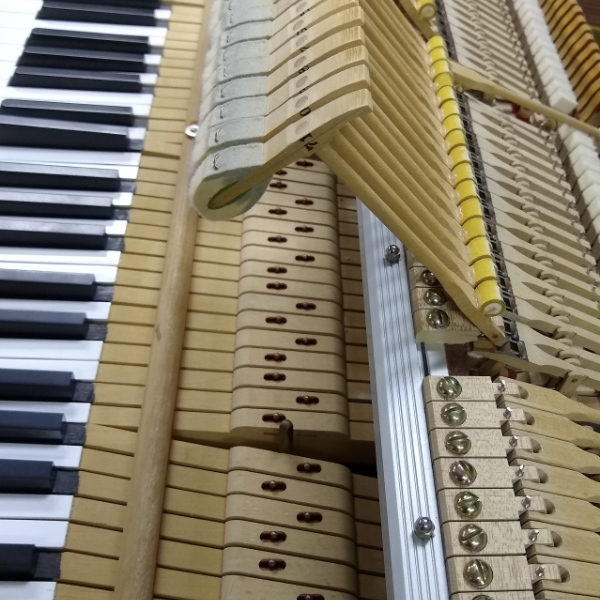Voicing & Regulation
Voicing

Voicing is a term that is used to describe how the “voice” or tone of the piano can be adjusted. Some pianos sound “bright” or “brassy” and even harsh. Certain players like this tone, especially if they play before large audiences, with an orchestra, or a genre like Rock and Roll piano. Whereas a “soft” or “warm” and mellow sound is preferred by many solo pianists performing light Romantic, Impressionist or Jazz music. This is very subjective and personal, and depends on what sounds “right” to the individual. Whereas a piano tuner/technician may have his own opinions and suggestions, a true professional respects the wishes of his/her client and will perform voicing techniques to suit their liking. The overall tone can be adjusted without an initial tuning but a piano should be fine-tuned and regulated well, before any subtle voicing is done.
Voicing is done by inserting a needle judiciously at appropriate places along the felt surface of the piano’s hammers. This opens up the wool fibres that constrict over time because of loss of lanolin and warms up the tone of the piano. Hammers can also be “hardened” by adding heat (ironing) or chemicals to the hammer’s felt and thus brightening the piano’s tone.
Piano hammers that become badly worn from repeatedly hitting the strings should be filed or reshaped to re-create the original rounded strike surface. Once several reshapings have been done, usually over many years, hammers should be replaced.*
*Footnote: This should only be done by a professional tuner/technician because of the risk of serious damage to the hammers or action.
Voicing Summary
- Brightens or Softens Sound
- Prolongs Life of Hammers
- Improves Tone
Regulation
Regulation is the process of setting up the “action” or working parts of a piano. The action is made up of several levers and flanges, wood and felt and metal, for each of the 88 keys. Each note has many points of adjustment that enable proper function. If not regulated well, the piano can become frustrating to play, feeling too heavy or unresponsive or in some other way too difficult to execute what the player is trying to do. On the other hand, a regulation done by an expert can make the piano much easier to play; on a fine instrument it is an absolute joy, where every note and nuance of expression is performed with ease.
Action regulation can sometimes be improved by small, temporary changes to certain parts of the mechanisms but eventually every piano will need a more thorough adjustment to these parts. While this is true of all acoustic instruments, a piano is different in that it has over 10,000 parts and requires many hours for a complete and professional regulation. There may be preliminary steps that must be taken before regulation can begin. This includes replacement of worn parts, tightening loose screws, filing and aligning hammers and so on.
There is much more involved in regulating a grand piano than an upright piano due to significant differences in the design of the action.
Regulation Summary
- Makes Touch More Responsive
- Adjusting of Action to Factory Specifications or Individual Preferences
Contact us to protect your investment.
We’d love to hear from you and put together a maintenance schedule for your piano to keep it sounding and looking like new for generations!
Cressman Piano Service
Victoria, British Columbia, Canada
Email: wayne@cressmanpiano.com
Phone: 250-507-5690